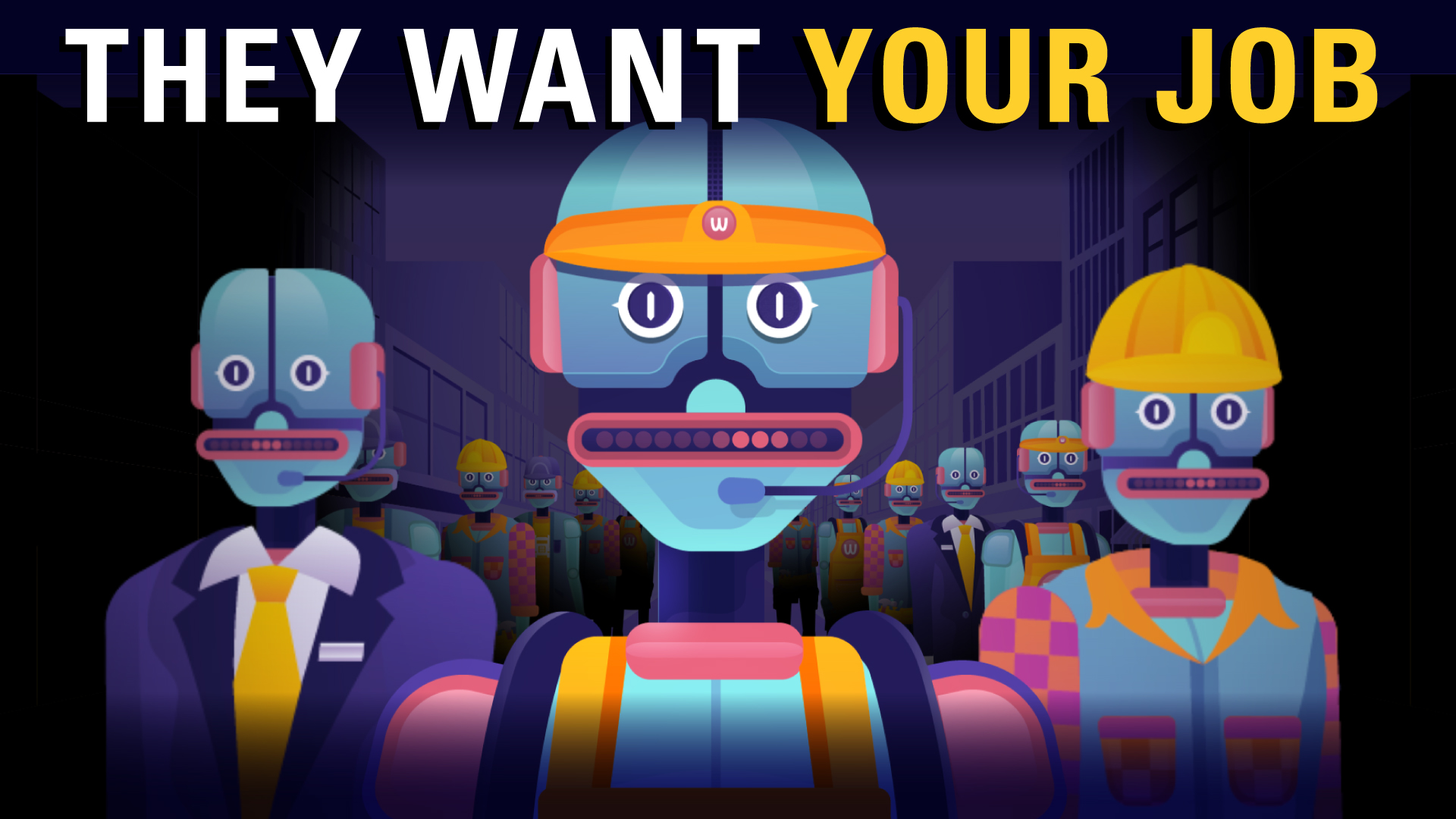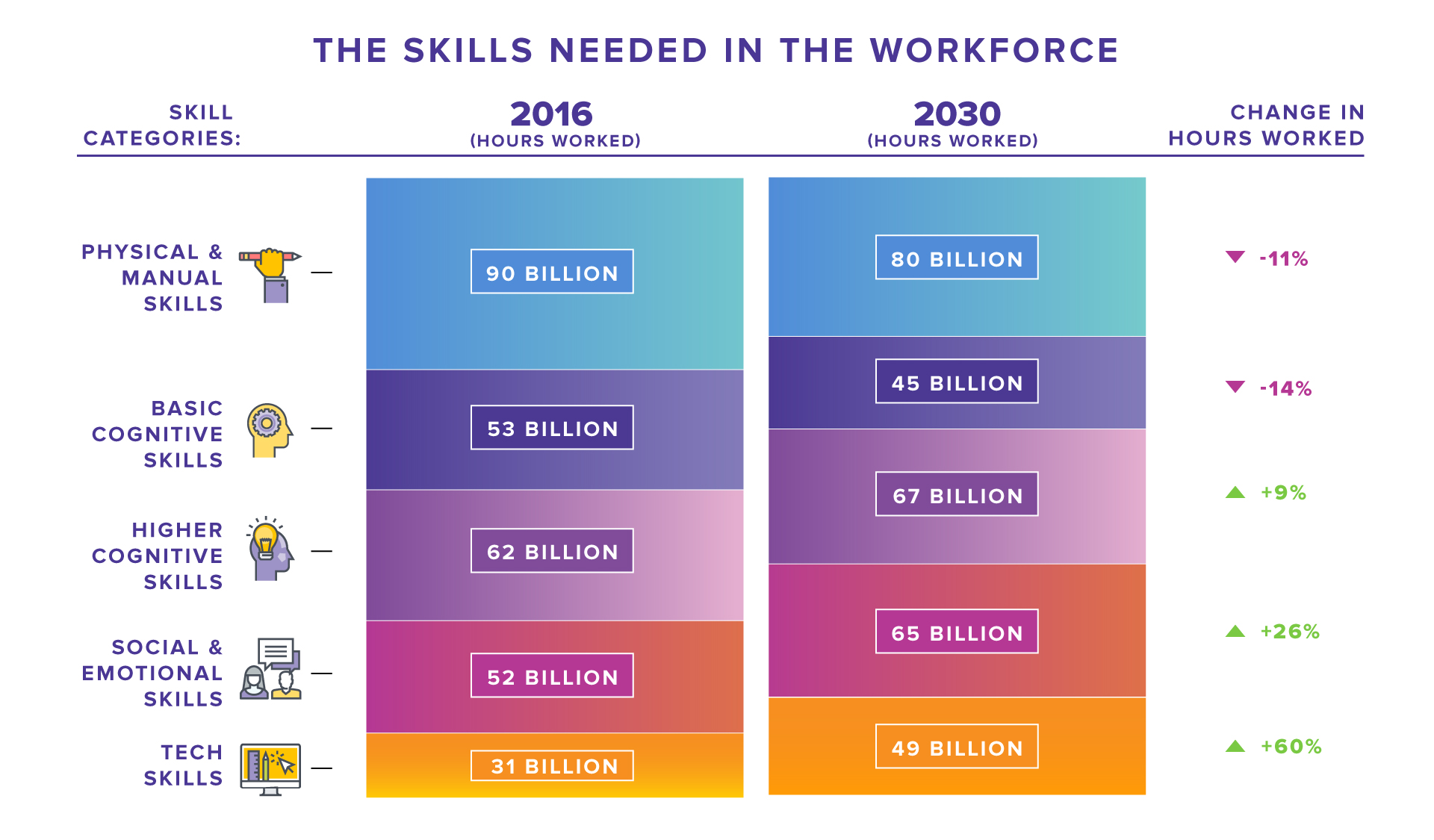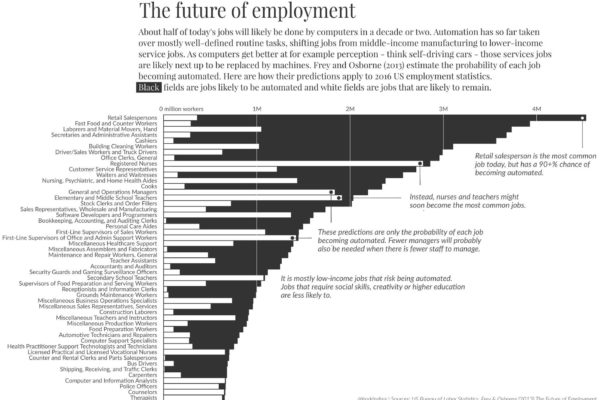
Rise of the Robots: How Can the Next Generation Compete?
Every industrial revolution brings a wave of change. In the fourth industrial revolution, technology is drastically redefining the landscape of work.
Today’s video explores how automation and AI are accelerating the skill shift needed for the future of work. How can young people stay ahead of this curve?
The Race to an AI-Powered Future
By 2030, artificial intelligence (AI) will boost the global economy by $15.7 trillion. However, this growth comes at a steep cost. Improvements in labor and productivity from automation could displace up to 800 million jobs by the same year—nearly 30% of workers worldwide.
With computers able to handle the same amount of work much faster than humans, various industries are on the chopping block. Understandably, young Americans are afraid of being left behind in such a scenario.
Learning to Work Smarter
By 2030, the tasks relying on physical and basic cognitive skills will plummet, such as assembly line work, customer service, or data entry. This is good news for young people—by eliminating tedious or routine work, it frees up more time to focus on complex decision-making. Machines can’t match human skills such as empathy, creativity, negotiation, and critical thinking.

AI and automation will also create jobs we can’t even imagine yet. Just like agricultural jobs have dramatically been replaced with new options over time, the exponential growth of technology is also an emerging opportunity for the next generation.
So What Can Young People Do?
In a constantly changing environment, the future can seem uncertain. However, AI and automation are still no match for the human touch. To ensure long-term career prospects, developing soft skills will be the key for Gen Z. What do soft skills look like?
- Leadership
- Communication
- Collaboration
- Time management
Another piece in this puzzle is lifelong learning, which builds on a base of existing skills to prioritize low-cost, bite-size options to stretch one’s knowledge. Some examples are certificate courses, volunteering, or simply seeking diverse work projects. These can be assessed every few years, and continuously improved.
LEARN MORE
Get free lesson plans and resources on personal finance from our co-founder Next Gen Personal Finance.
Be the first to see all future personal finance infographics by getting on Visual Capitalist’s free email list.
